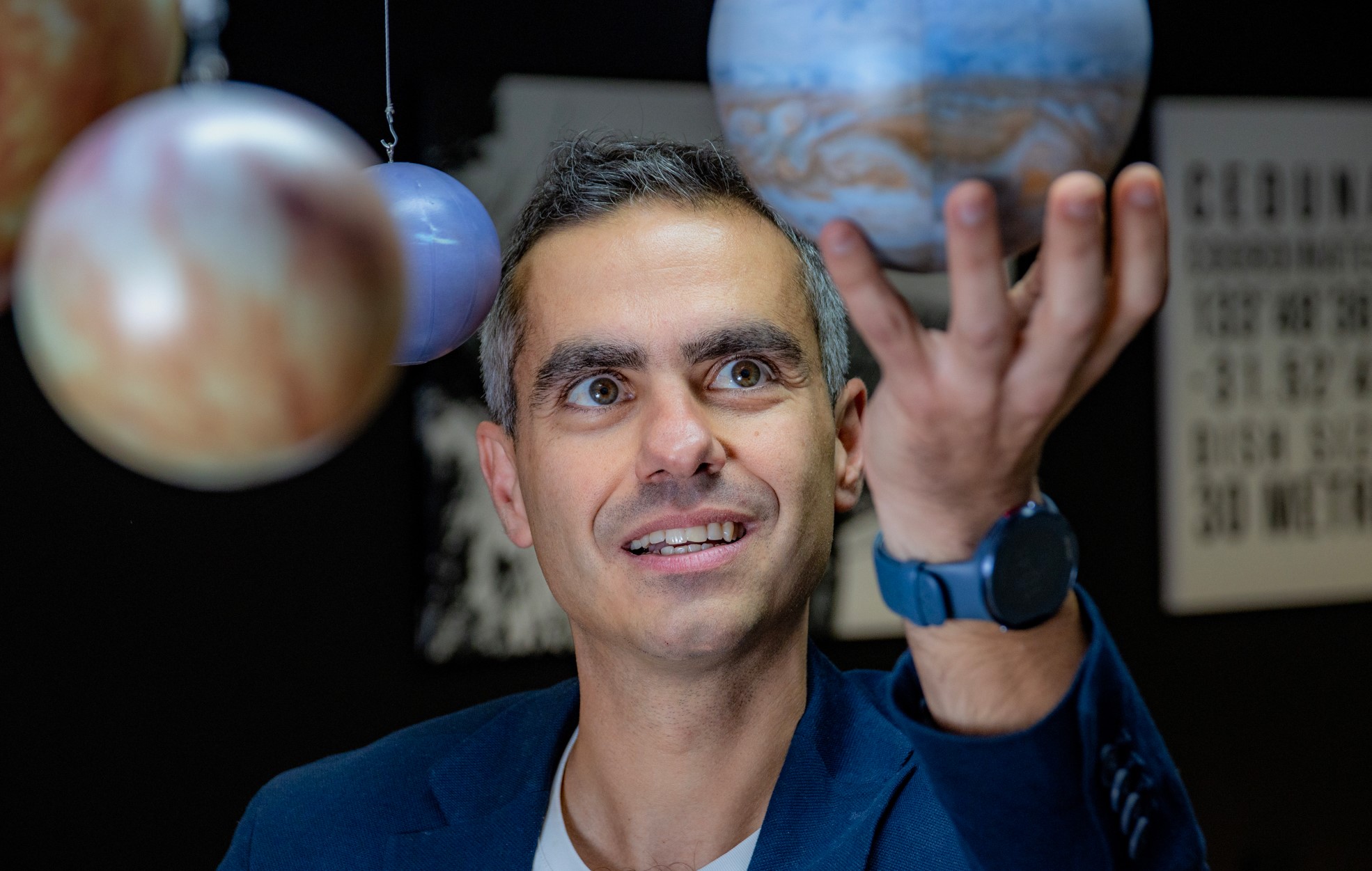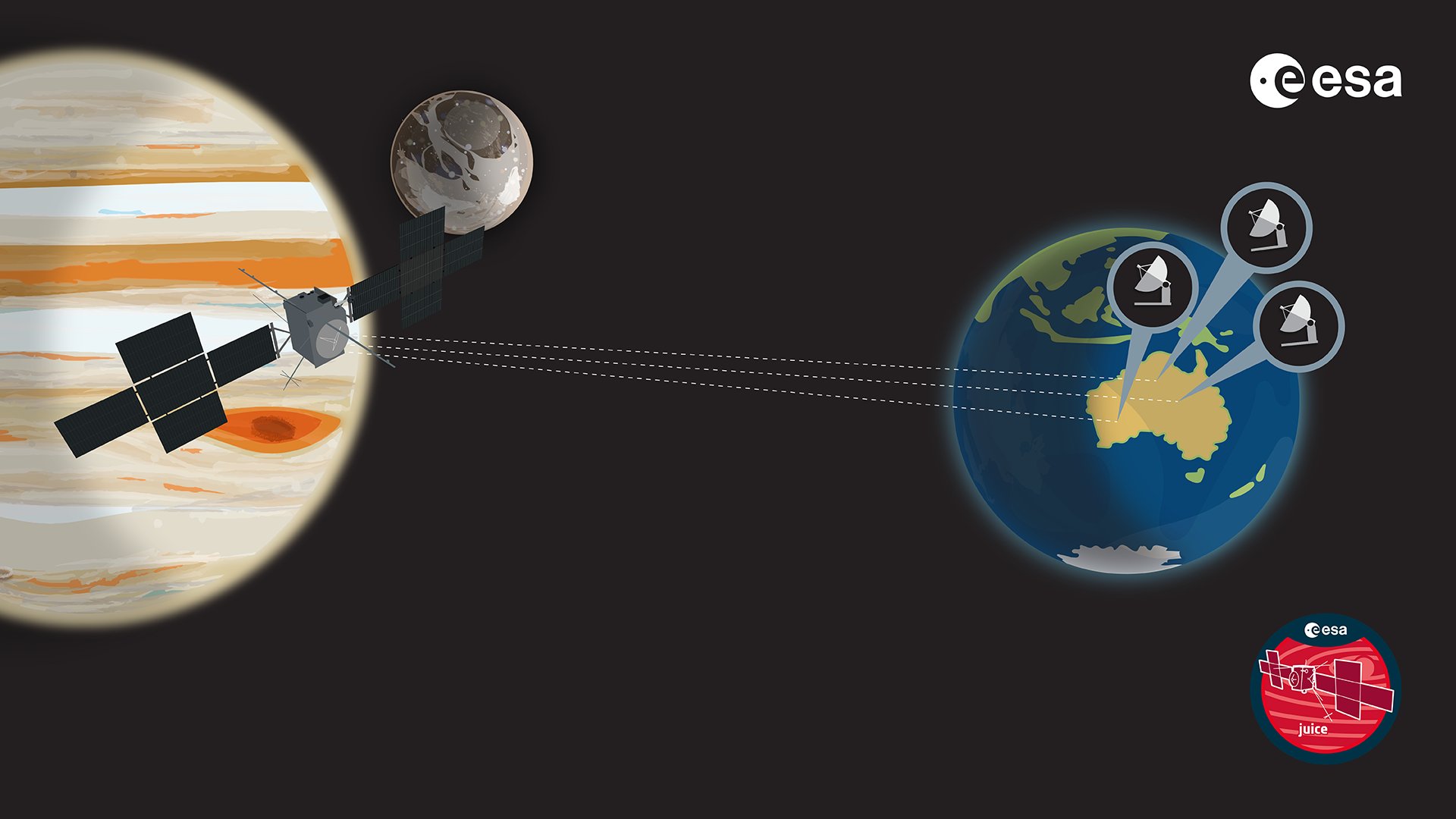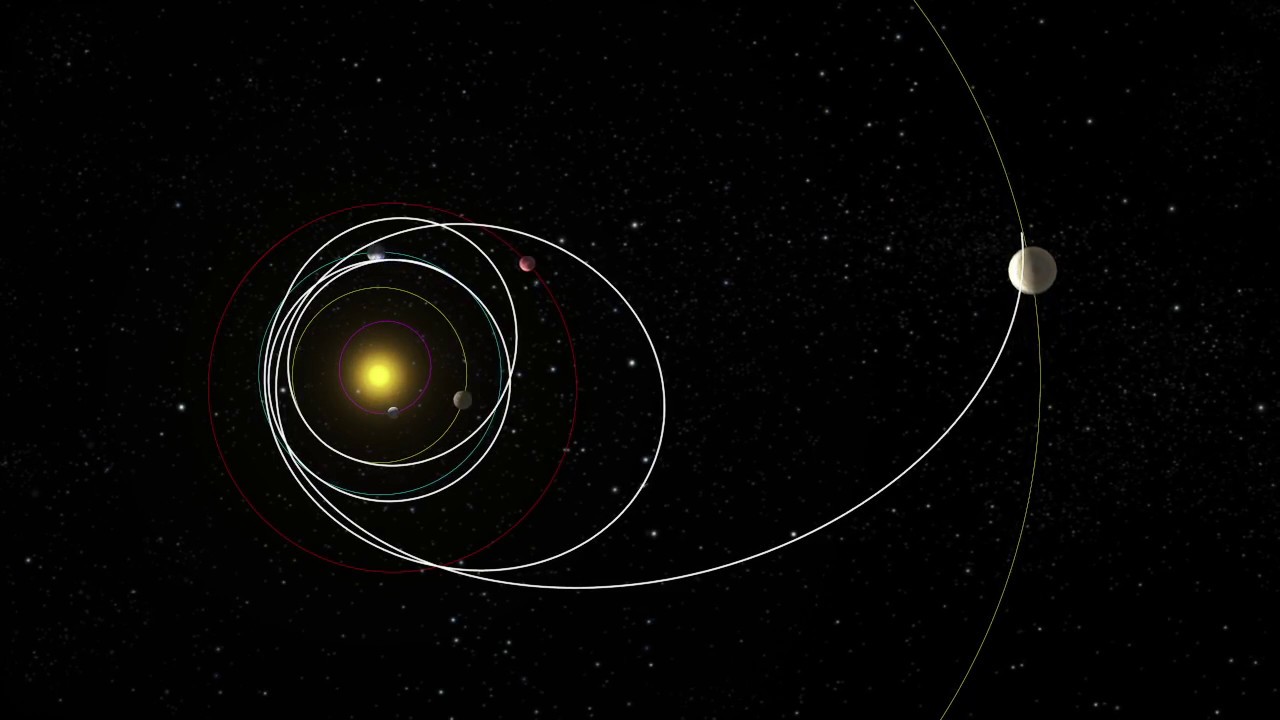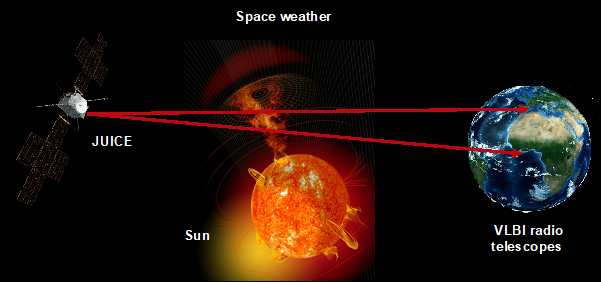Ten years of preparation led University of Tasmania space scientist Dr Guifré Molera Calvés from the School of Natural Sciences to a career highlight.
The researcher is among dozens of scientists across the world contributing to the European Space Agency (ESA) mission to launch the Jupiter Icy Moons Explorer – ‘JUICE’ – spacecraft on an eight-year journey beyond Mars and out to the giant gas planet of Jupiter.
JUICE – an unmanned scientific probe – will arrive in the Jovian environment in 2031 to study Jupiter and three of its 95 (at last count) moons. The probe is equipped with eleven different sensors to study the planet in an unprecedented way. The primary goal of its mission is to search for evidence of water and life, and to study the Jupiter system as an example of a series of gas giants.
There is evidence from 2020 that the three, icy moons may be home to vast, underground oceans, where sea life could exist. And in 2018 a team of scientists used data from telescopes to find a significant amount of water in Jupiter’s famous Great Red Spot - a hurricane-like storm that has been churning for over 150 years and is twice as wide as Earth. This mission will shed more light on the possibility of other life in our solar system.

Dr Molera Calvés and his team conducted observations of JUICE from the first days of the mission in April 2023, while the probe was in its near-earth commissioning phase.
“This phase was recently successfully completed, with the work we did crucial to verifying that all instruments on-board were operating flawlessly ahead of the probe’s further journey and eventual arrival at Jupiter,” he said.
The team’s observations were done as part of the Planetary Radio Interferometer and Doppler Experiment (PRIDE), an instrument on-board of JUICE. PRIDE uses a global network of radio telescopes and data processing centres, which is led by the Joint Institute for Very-Long-Baseline Interferometry in Europe (JIVE).
“The University of Tasmania is the only University in the world to operate a continental-scale array of radio telescopes and, because of this unique capability, was invited to be a PRIDE partner.
“We were able to utilise the five radio telescopes we operate from here in Hobart to monitor the JUICE radio signal,” Dr Molera Calvés said.

The data that the team collected allowed ESA to ensure the probe was travelling on target, and provided measurements for planetary science studies.
“When the ESA released the first set of results collected by our team – it was very exciting to see our work come to life,” Dr Molera Calvés said.
The team used three of the University of Tasmania 12-metre radio telescopes in Hobart, Katherine (Northern Territory) and Yarragadee (Western Australia) for one of their observations of JUICE.
They tracked the probe 3 to 4 times per week to calibrate the PRIDE ground-based instrumentation, verify data processing software and maintain operational readiness for future science observations.
“Everything went to plan – the signal detected in these observations demonstrates the expected strength and stability. It’s good news. These data were handed to ESA then to be evaluated in their JUICE Near-Earth Commissioning Review, which signed and approved in late July”
“During these observations, the spacecraft was approximately 7.8 million kilometres from Earth – by the time JUICE reaches Jupiter it will be around 810 million kilometres from Earth.”
JUICE has now started the 88-month cruise phase of the mission, in which the spacecraft will conduct a series of manoeuvres (planetary gravity assists) completing elliptical solar orbits (pictured below) to gain velocity before exiting the inner solar system.

After this phase, it will fly past Jupiter’s three icy moons: Callisto, Europa, and Ganymede, allowing researchers to characterise the Jovian system, the planet, and its magnetosphere, before being inserted into orbit around Ganymede, Jupiter's largest moon.
“Our work didn’t end with the near-earth phase and won’t end with the cruise phase – the ongoing monitoring PRIDE campaign also contributes to studies of the space environment within the solar system and the study of space weather,” Dr Molera Calvés said.
Space weather studies all the events on the sun, in the solar wind and near-Earth space and forecasts their impact.
Pradyumna Kummamuru and Jasper Edwards, two PhD candidates at the University of Tasmania, are using the radio signals transmitted by JUICE, and other spacecraft in the solar system, to describe the features of the large amounts of plasma ejected by the Sun and study the fundamental physics that causes its acceleration out into the solar system.
“Probably the most hazardous of space weather events are coronal mass ejections (CMEs),” Mr Edwards said.
“CMEs are large magnetic structures that explode violently out into the solar system travelling at speeds in excess of 1000 kilometres per second and carrying huge amounts of plasma with them.
“CME structures impacting the Earth’s magnetosphere (the region around a planet dominated by the planet's protective magnetic field) have the potential to affect satellites significantly and even catastrophically. This could damage GPS, aviation, rail transport and power-grid operations among countless other critical activities.”
Dr Molera Calvés said the University of Tasmania produces a significant amount of space weather research, focusing on the southern skies.
“This research helps us better understand how these major weather events occur and how we can better predict their trajectories through space and reduce devastating impacts.”

In late September 2023, the University of Tasmania will host the Australian Space Research Conference in Hobart, Tasmania. The conference will attract almost 150 influential space science researchers and space industry figures from across Australia and beyond.
Find out more about the Australian Space Research Conference, or how you could study space through a Bachelor of Science or research space with our world-class team at The University of Tasmania.


